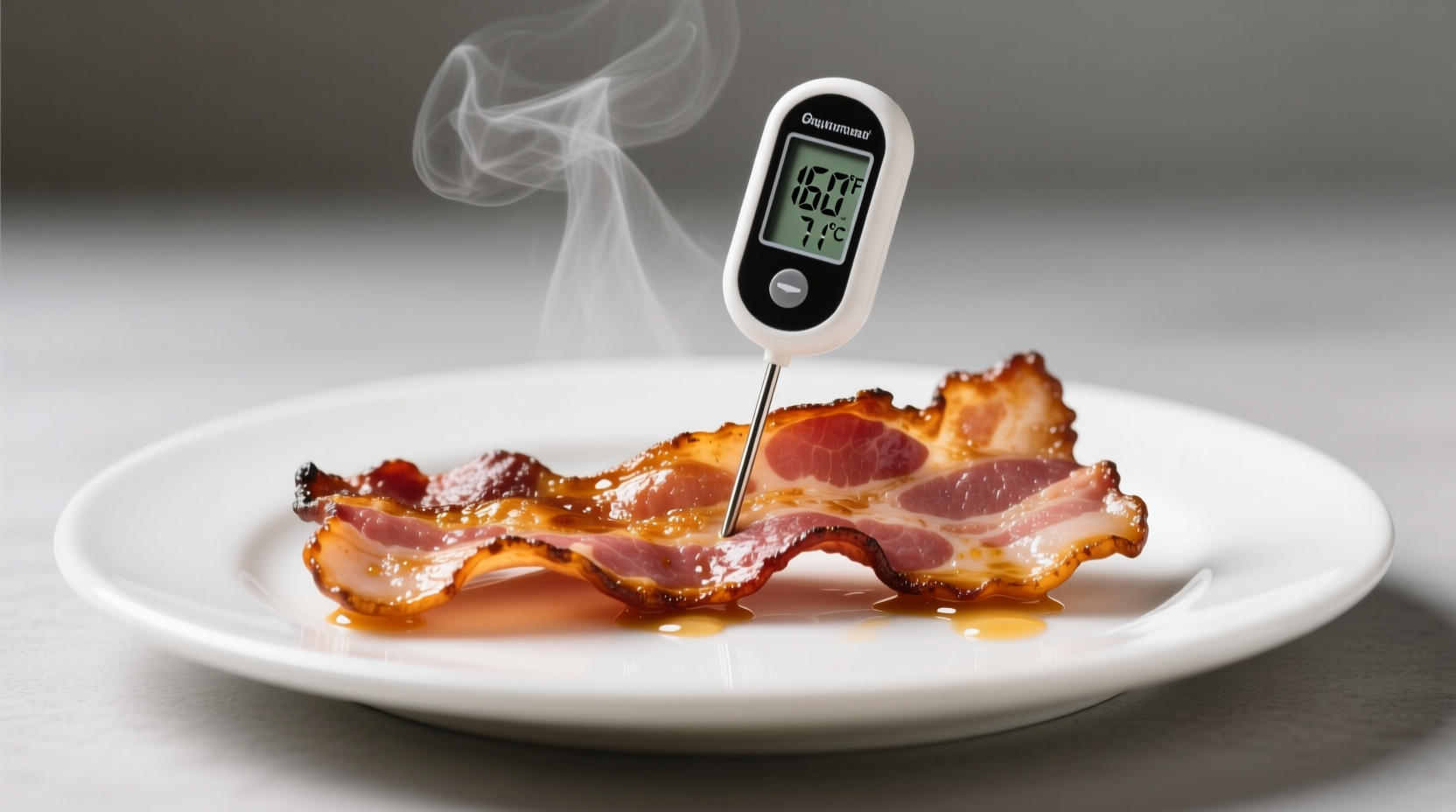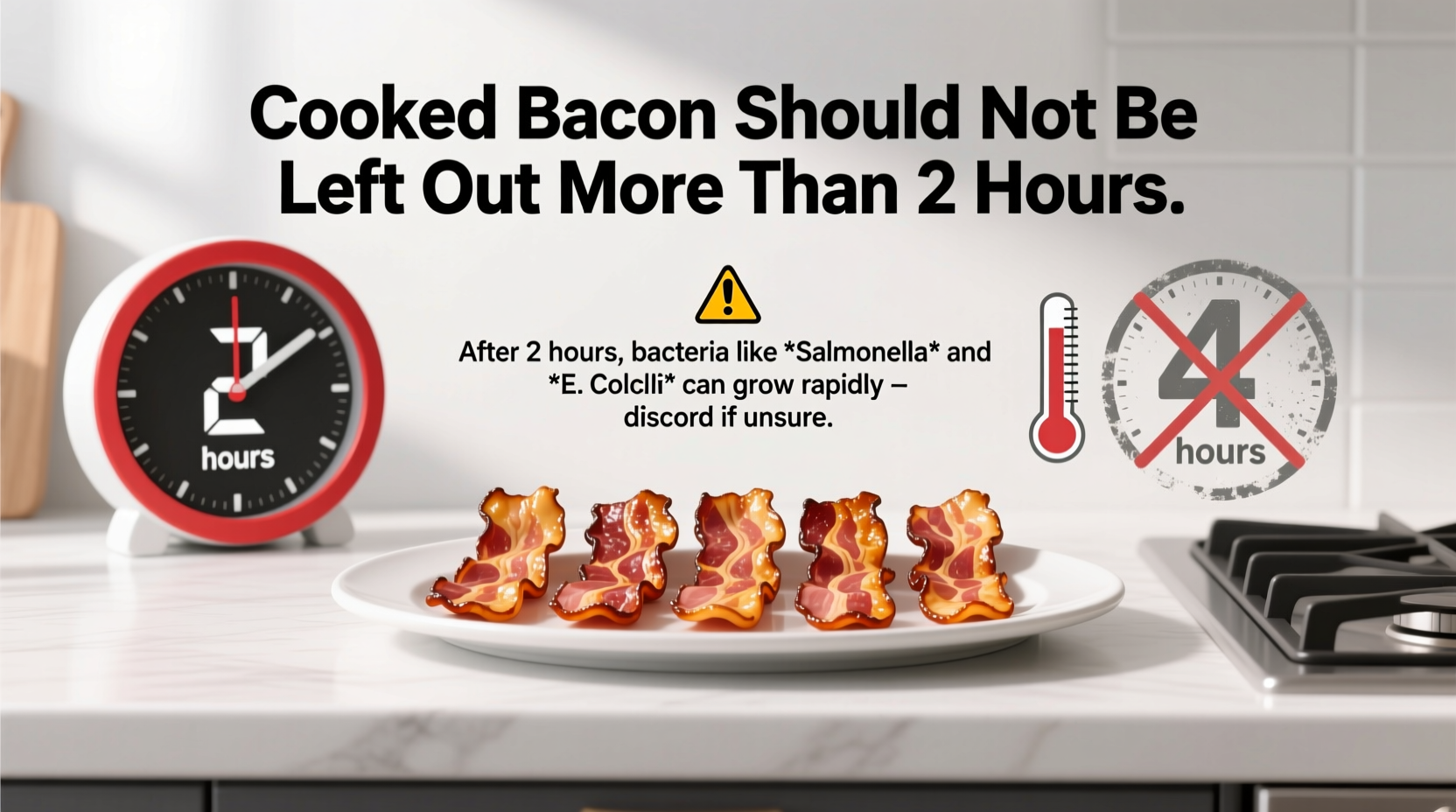Ever cooked a big batch of crispy bacon only to realize you've made too much? You're not alone. Millions of home cooks face this delicious dilemma weekly. Understanding how long cooked bacon can safely remain at room temperature isn't just about preserving that perfect crunch—it's critical food safety knowledge that protects you and your family from foodborne illness.
The Science Behind Bacon Safety
When bacon leaves the frying pan, it enters what food safety experts call the “danger zone”—the temperature range between 40°F and 140°F (4°C to 60°C). Within this zone, bacteria like Staphylococcus aureus and Clostridium perfringens multiply rapidly, doubling in number every 20 minutes under ideal conditions.
According to the USDA Food Safety and Inspection Service, cooked bacon falls into the category of ready-to-eat foods that require special handling precautions. Unlike raw meats that will be cooked before consumption, cooked bacon provides an ideal environment for bacterial growth because its moisture and fat content create perfect breeding conditions.
Timeline of Bacterial Growth in Cooked Bacon
| Time at Room Temperature | Bacterial Growth | Safety Status |
|---|---|---|
| 0-30 minutes | Minimal growth | Perfectly safe |
| 30-60 minutes | Moderate growth | Still safe |
| 1-2 hours | Rapid multiplication | Approaching danger zone |
| 2+ hours | Exponential growth | Unsafe for consumption |
Why Temperature Matters More Than You Think
The standard 2-hour rule assumes your kitchen maintains a typical room temperature of 70°F-75°F (21°C-24°C). However, during summer months or in warmer climates, kitchen temperatures often exceed 90°F (32°C), creating what the FDA Food Code identifies as “accelerated risk conditions.”
In these warmer environments, the safe window shrinks dramatically to just 1 hour. This isn't arbitrary—bacterial growth rates double with every 18°F (10°C) increase in temperature. At 95°F (35°C), bacteria can reach dangerous levels in less than 60 minutes.

Practical Storage Solutions for Leftover Bacon
When you've finished enjoying your bacon, follow these professional kitchen-tested steps to maximize both safety and quality:
Step 1: Cool Properly (Within the Safe Window)
Resist the temptation to immediately cover hot bacon. Allow it to cool on a wire rack for 10-15 minutes—just enough to drop below 140°F while staying within the 2-hour safety window. This prevents condensation that would make your bacon soggy.
Step 2: Store Correctly
Transfer cooled bacon to an airtight container or resealable bag, squeezing out excess air. For optimal results:
- Refrigeration: Store in the main compartment of your refrigerator (not the door), where temperatures remain consistently cold. Properly stored, cooked bacon maintains quality for 4-5 days.
- Freezing: For longer storage, separate slices with parchment paper before placing in freezer bags. Frozen cooked bacon stays safe indefinitely but maintains best quality for 1-2 months.
Step 3: Reheat Safely
When reheating, ensure bacon reaches an internal temperature of 165°F (74°C) to eliminate any potential bacteria. The microwave provides the fastest method (20-30 seconds), while the oven (350°F for 5-8 minutes) best preserves crispness.
Signs Your Cooked Bacon Has Gone Bad
Sometimes timing isn't the only factor. Watch for these unmistakable warning signs that your cooked bacon is no longer safe to eat:
- Texture changes: Slimy or sticky surface (not to be confused with normal grease)
- Odor changes: Sour, fishy, or generally “off” smell
- Visual changes: Discoloration beyond normal browning, especially green or blue spots
- Mold: Any visible mold growth means immediate disposal
When in doubt, throw it out. No amount of reheating can eliminate certain toxins produced by bacteria like Staphylococcus aureus, which remain dangerous even after the bacteria themselves are killed.
Special Considerations for Different Cooking Methods
The cooking method affects both texture and safety considerations:
- Oven-baked bacon: More evenly cooked with less grease, slightly longer safe window due to drier texture
- Cast iron cooked: May have slightly higher initial temperature, requiring careful monitoring during cooling phase
- Pre-cooked store-bought: Often contains additional preservatives but still follows the same 2-hour safety rule once opened and heated
Food Safety for Special Events and Gatherings
During brunches, potlucks, or holiday meals where bacon might sit out longer, implement these professional strategies:
- Use chafing dishes with warming elements set to maintain 140°F+
- Place bacon in small batches, replenishing from refrigerated portions
- Use ice trays for serving in warm environments to keep temperatures safe
- Set phone reminders to check time bacon has been sitting out
Remember that buffet-style service requires extra vigilance—the USDA reports that foodborne illness incidents increase by 35% during holiday gatherings due to extended food holding times.
Maximizing Both Safety and Quality
Professional kitchens achieve both safety and quality through these techniques:
- The 2-2-4 rule: 2 hours max at room temperature, then 2 days in refrigerator, 4 months in freezer
- Batch cooking: Cook only what you'll consume immediately, then prepare additional portions as needed
- Temperature logs: Serious home cooks track cooking and cooling temperatures with instant-read thermometers
By understanding how long cooked bacon can safely remain at room temperature and implementing proper storage techniques, you protect your health while enjoying that perfect crispy texture meal after meal.











 浙公网安备
33010002000092号
浙公网安备
33010002000092号 浙B2-20120091-4
浙B2-20120091-4